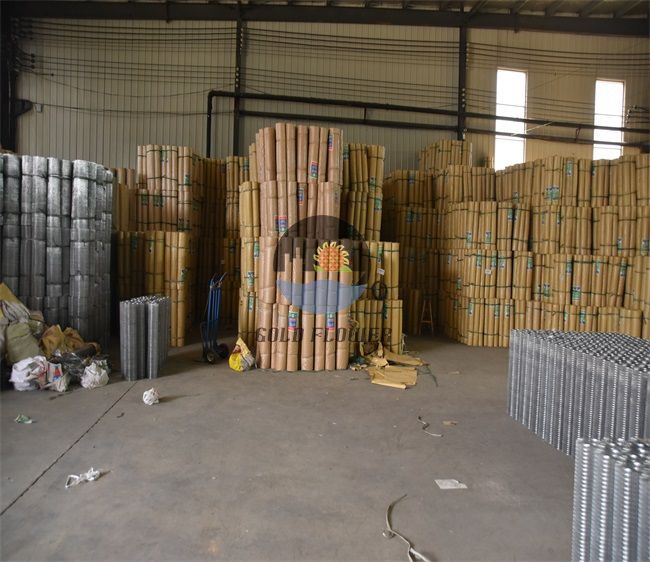Nov . 30, 2024 19:05 Back to list
CE Certified Stainless Steel Nets for Enhanced Durability and Safety in Various Applications
CE Certification for Stainless Steel Net Ensuring Quality and Safety
In the modern industrial landscape, the need for quality, safety, and compliance has never been more critical. One of the essential certifications that manufacturers seek is the CE marking, a symbol indicating conformity with health, safety, and environmental protection standards for products sold within the European Economic Area (EEA). This article focuses on the CE certification process specifically for stainless steel nets, a product widely used in industries such as construction, agriculture, and food processing.
Understanding CE Certification
CE certification is a commitment by manufacturers that their products meet the rigorous requirements set forth by the European Union (EU). This certification applies to various products, including machinery, electrical devices, and construction materials, including stainless steel nets. The CE marking indicates that the product complies with all applicable EU legislation, allowing for free movement within the EU market.
Importance of Stainless Steel Nets
Stainless steel nets are versatile and serve numerous functions across different sectors. Common applications include
1. Construction Stainless steel nets are used as reinforcement materials in concrete structures to enhance strength and durability. 2. Agriculture They serve as fencing to protect crops from wildlife while ensuring good visibility and airflow. 3. Food Processing Stainless steel nets are favored for their hygiene properties, corrosion resistance, and ease of cleaning, making them ideal for processing plants.
Given the variety of applications, it is imperative that stainless steel nets meet specific safety and quality standards to protect end-users and the environment.
The CE Certification Process for Stainless Steel Nets
Achieving CE certification involves several steps. Manufacturers must first determine the applicable EU directives and regulations relevant to their products. For stainless steel nets, these may include
- Construction Products Regulation (CPR) This regulation emphasizes the importance of performance characteristics in construction materials. - Machinery Directive If the nets are part of a machine or used in automated systems, compliance with this directive may also be necessary.
Step 1 Product Testing
ce certification stainless steel net

The first step in the certification process is product testing. Manufacturers must ensure that their stainless steel nets are tested against the specific requirements outlined in the relevant directives. This often includes assessing the mechanical properties, corrosion resistance, and overall performance.
Step 2 Technical Documentation
Next, manufacturers must compile technical documentation demonstrating compliance with the applicable regulations. This documentation should include
- Product descriptions - Test results - Manufacturing processes - Quality control measures
Step 3 Declaration of Conformity
Once the technical documentation is prepared, manufacturers must create a Declaration of Conformity, stating that the product meets the EU requirements. This declaration is a legal document that must be available for inspection upon request.
Step 4 CE Marking
Finally, the manufacturer can affix the CE mark to their stainless steel nets. This mark must be visible, legible, and permanent. It signifies that the product is compliant with EU regulations and can be sold in the EEA.
Challenges in CE Certification
Despite its importance, obtaining CE certification for stainless steel nets can present challenges. The process can be time-consuming and costly, especially for small and medium-sized enterprises (SMEs). Additionally, manufacturers must stay updated on changes in regulations and standards, which can evolve based on technological advancements and safety concerns.
Conclusion
CE certification is a crucial aspect of ensuring that stainless steel nets meet high standards of quality and safety. It not only facilitates market access within the EU but also builds trust among consumers, offering assurance that the products they are using are safe and reliable. For manufacturers, navigating the CE certification process can be complex, but the benefits of compliance—ranging from enhanced reputation to greater market opportunities—far outweigh the challenges. In a world where quality and safety are paramount, CE certification stands as a vital benchmark for stainless steel net manufacturers, promoting excellence across various industries.
share
-
High-Efficiency Particle Filter for Superior Air Purification
NewsJul.23,2025
-
CE Certification 250 Micron Stainless Steel Mesh for Industrial Use
NewsJul.22,2025
-
CE Certified 250 Micron Stain Steel Mesh - Durable & Safe
NewsJul.21,2025
-
CE Certified 250 Micron Stainless Steel Mesh - High Durability & CE Approved
NewsJul.21,2025
-
Premium Slope Collapse Protection Mesh | Durable & Effective
NewsJul.20,2025
-
Safety Mesh for Windows – Durable Mosquito and Insect Protection Solutions
NewsJul.08,2025

